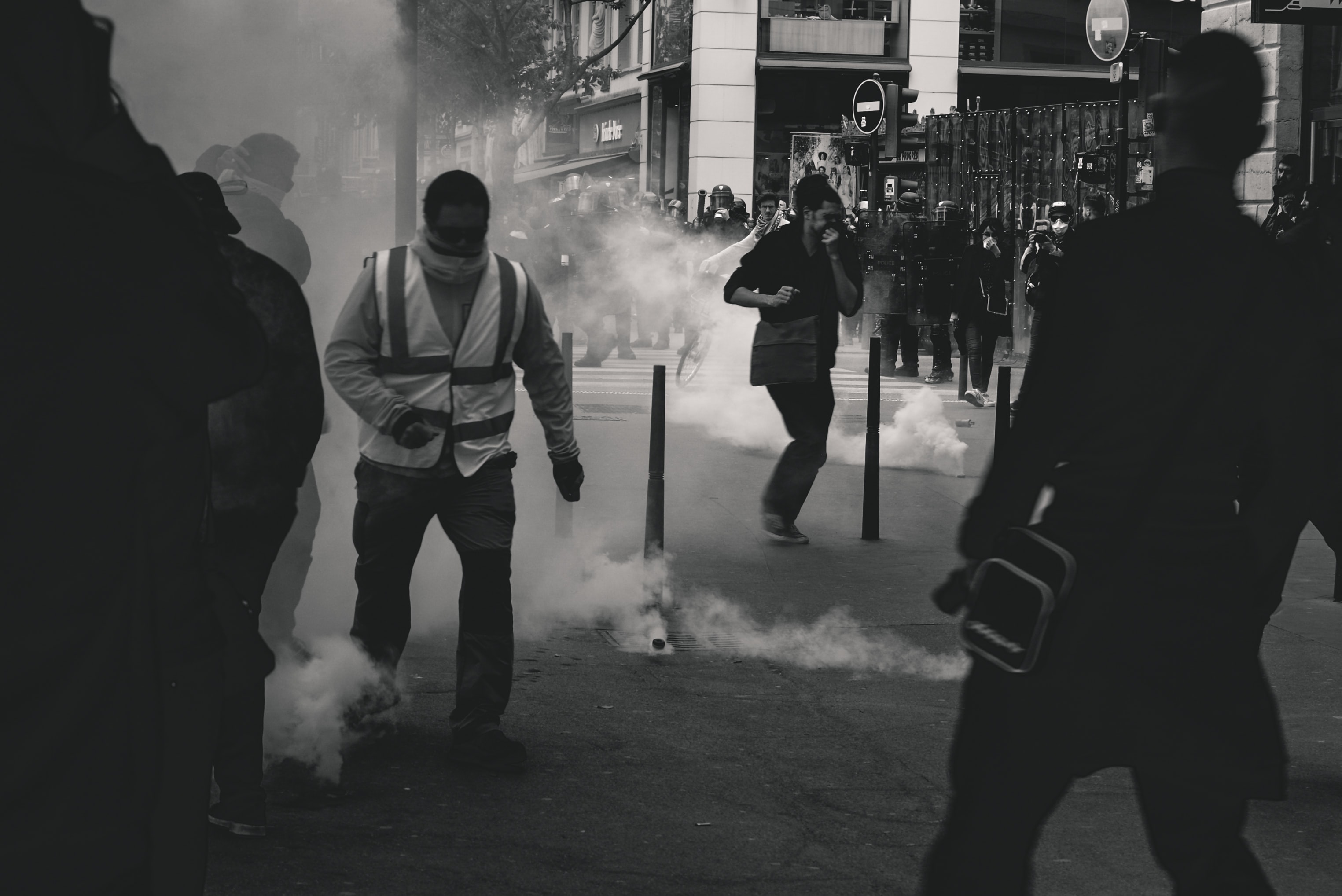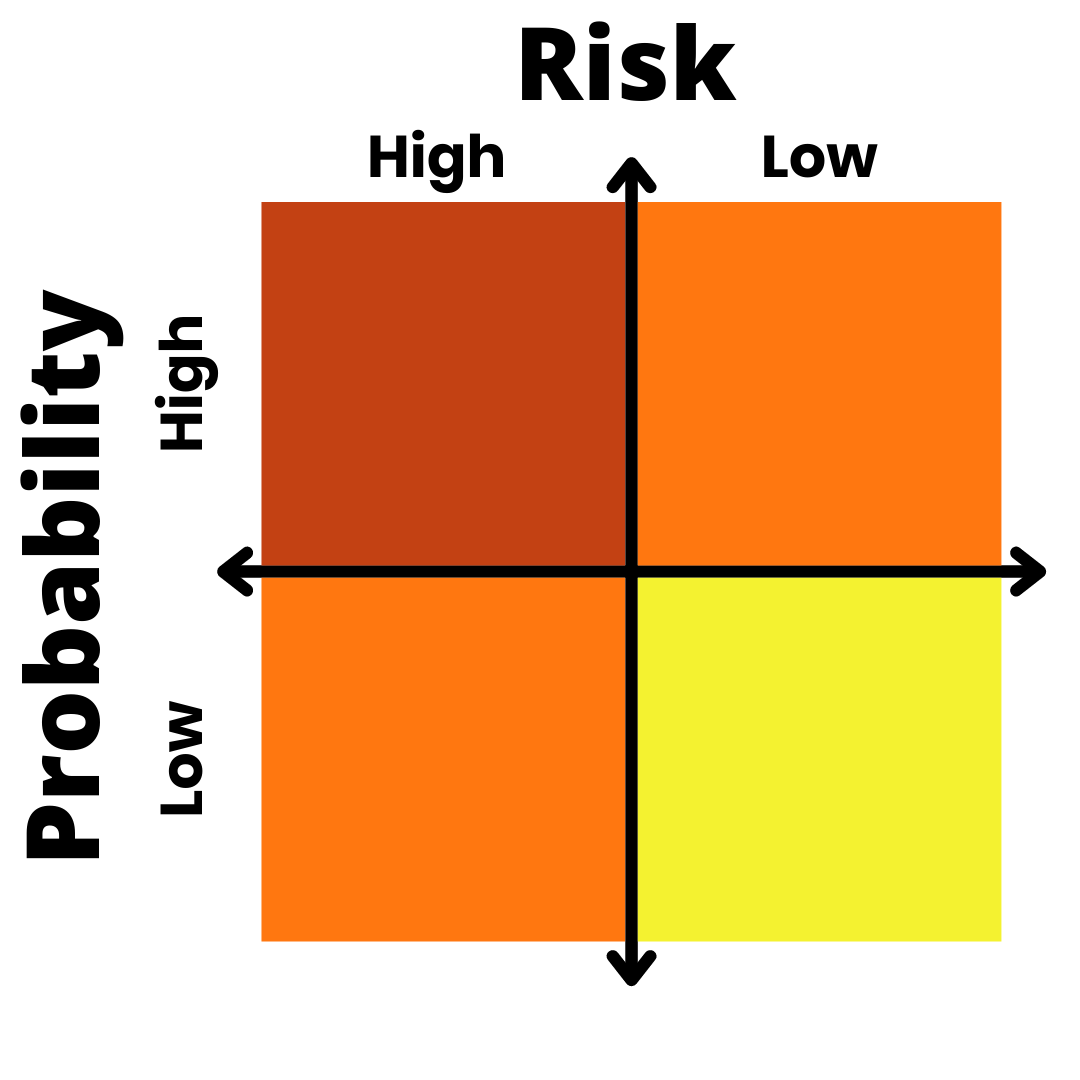SAFE Training Part 2: Safety Equipment for Civil Unrest

The possibility that covering civil unrest situations or other high-risk events during political or social instability could lead to violence is relatively new to the United States. News crews need to be very methodical and understand the hazards presented, know how to assess risk and have mitigation plans when committing to an assignment where violence is possible.
Hazard & Risk Assessment
 If your newsroom is going to be covering any kind of high-risk event, you need to protect yourself and your team from potentially life-threatening hazards. In order to select the proper protective gear for each unique situation, you must first carefully assess the risk level and risk probability of potential hazards. Risk level measures the potential harm of a hazard if it would occur and probability assess its likelihood. For example, in civil unrest it is a HIGH Risk / HIGH Probability that someone could throw a rock or bottle striking you. It is a HIGH Risk / LOW probability that you would be injured by gunfire. Once your team has completed a risk assessment of various possible hazards for the event you'll be covering, then look at what safety gear can mitigate the hazards. Start with High Risk / High Probability and work down the list towards less severe hazards.
If your newsroom is going to be covering any kind of high-risk event, you need to protect yourself and your team from potentially life-threatening hazards. In order to select the proper protective gear for each unique situation, you must first carefully assess the risk level and risk probability of potential hazards. Risk level measures the potential harm of a hazard if it would occur and probability assess its likelihood. For example, in civil unrest it is a HIGH Risk / HIGH Probability that someone could throw a rock or bottle striking you. It is a HIGH Risk / LOW probability that you would be injured by gunfire. Once your team has completed a risk assessment of various possible hazards for the event you'll be covering, then look at what safety gear can mitigate the hazards. Start with High Risk / High Probability and work down the list towards less severe hazards.
Download Civil Unrest One-Sheet
Equipment & Standards
Basic equipment for civil unrest scenarios includes:
- Helmet - Impact Rated OR Bump Cap insert. Skateboard helmets work well for this.
- Protective Eyewear - Glasses or Goggles to a Z87+ standard or better
- Respiratory Protection – Half or Full-Face Respirator. If full face, lens MUST be Z87+. Filters for any respiratory protection must be for “CS/CN/P100 Crowd Control or Riot Agents.” Look for industry marking color codes Olive and Magenta to identify these filters.
Intermediate personal protective equipment includes all the above plus:
- Ballistic Vest – Soft Panel Vests, concealable under your clothing rated to at least NIJ Level 3a. This will stop MOST handgun rounds.
- Individual First Aid Kit (IFAK) – Minimum contents include a CAT Tourniquet, “Israeli” style pressure dressing, roller gauze for wound packing and protective gloves.
Advanced personal protective equipment includes all of the above plus:
- Ballistic Vest – Hard Plate, NIJ Level 4 protection from handgun, rifle rounds and armor piercing ammunition. You wear this in a carrier over your clothing. 10-20Lbs weight!
- Ballistic Helmet – NIJ Level 3.
View Recommended Equipment List
Tips & Tricks
- If you keep your safety gear it in a backpack like I do, you must practice its use. You should be able to quickly move to a safe area, drop to your knees, get the supplies out, don your mask first, cinch it tight to seal it up, and then put on your helmet, secure the chin strap in 60 seconds or less. Practice until you can!
- Practice with your gear in a dark room and once you have mastered that, try it with your eyes closed. The gear might just save your life. Practice using it!
- If you are carrying an IFAK, let your teammates know where on your body or in what compartment in your bag it is located. They may need to use it on you to save your life.
- Watch: How to use a CAT tourniquet
- Watch: How to use an Israeli bandage
- Watch: Additional bandage techniques
- Take a “Stop the Bleed” course to learn these skills in a classroom setting.
- If your employer is giving you a gas mask, OSHA requires fit testing to make sure they issue you the right size mask. Don’t forget that you will need a cartridge for the mask that filters “crowd control agents,” typically CS or CN (commonly referred to as tear gas). These filters are usually P100 rated and use industry marking color codes Olive and Magenta.
- Be mindful of how you dress for the event. Looking like one side of the protest or the another is extremely dangerous. Don’t look like an adversary to any parties involved or you may be misidentified as an opposition actor and directly targeted. Consider any display of insignia that identify you as “PRESS” or “MEDIA” as conditions may not be favorable to visually identify what you are doing. DO always have credentials and identification available quickly on request of law enforcement. Avoid tactical or military-type safety gear or colors that any of the groups routinely wear or use to signify sides.
- Discuss with your team what you will do if something bad happens. Talk about the “WHAT IF” plans. What will we do if someone gets hurt? What will we do if our team becomes separated? If we need to seek shelter or cover where will we go? If someone becomes injured, how will we get them out danger and to medical treatment? Who has the truck keys? If one person gets injured, can we still report or go live?
- Good practice is to keep to the edge or outer limits of any protest or crowd. Consider elevated positions. High ground to allow you to look down onto the activity.
- Look for suspicious items, packages or people in your vicinity and try and maintain situational awareness at all times. Scan above you, at eye level and then at ground level for things that look out of place.
